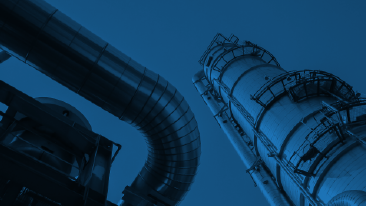As the global EPC industry settles into a “new normal” of fewer and smaller capital projects, many firms have begun implementing initiatives to increase efficiencies in how they bid and execute their lower volume of project work. But with smaller teams and key personnel often distributed across offices and time zones, improving work processes and increasing team productivity have become more challenging.
To help overcome these challenges, leading global EPCs are seeking to standardize workflows and technology platforms to enable more work sharing, cross-office collaboration, and a “follow the sun” project execution approach for conceptual design, estimating and FEED. Their new initiatives require engineering teams across locations and disciplines to come together as virtual project teams to effectively execute their work.
Time of Transition
Many larger firms have been operating as confederated states made up of previously acquired firms, strong regional offices or areas of domain expertise. In the new paradigm, these virtual islands are being connected by new work processes supported by technology that allows the firm to harness all its talent and bandwidth to pursue the opportunities that are the best fit and offer the most financial reward.
By breaking down the silos between divisions, regions and offices, they are building organizations and technology platforms that will allow them to win more projects and execute that project work more effectively. In pursuing these initiatives, some common objectives include enabling virtual teams comprised of experts from across the organization— in different departments, locations and time zones — to leverage the full breadth of the firm’s capabilities.
To support these objectives, firms are looking for a design and engineering platform that supports collaboration and model-based, simultaneous work processes. AspenTech refers to the new way of working as concurrent process engineering and defines it as “a collaborative, model-based design and engineering process, where different disciplines work together, in parallel and with consistent, shared project information, to deliver better, more tightly-integrated estimates and plant designs that are produced faster and are better optimized for the plant as a holistic, interdependent system.”
Significant Benefits
The benefits that companies are realizing from the concurrent process engineering approach typically fall into three areas:
-
Better design outcomes from early collaborative decision-making
-
Preservation of project knowledge across disciplines and phases
-
Accommodation of project changes
Companies pursuing a better way of working with the concurrent process engineering approach include Worley Parsons, Samsung Heavy Industries, DowDuPont, Siirtec Nigi, Alcoa, Petrofac and Burns & McDonnell. They’ve seen improvments such as a 40-50 percent reduction in engineering man hours, more streamlined workflows and the ability to work across international offices.
I can see this quickly becoming a requirement for EPC firms to continue to be competitive in this already difficult market. We’re currently holding a series of half-day workshops with organizations who are interested in the topic. Please contact me if you’d like to set one up for your firm.
To learn more about AspenTech’s platform for collaborative model-based engineering, register for our upcoming webinar.





Leave A Comment